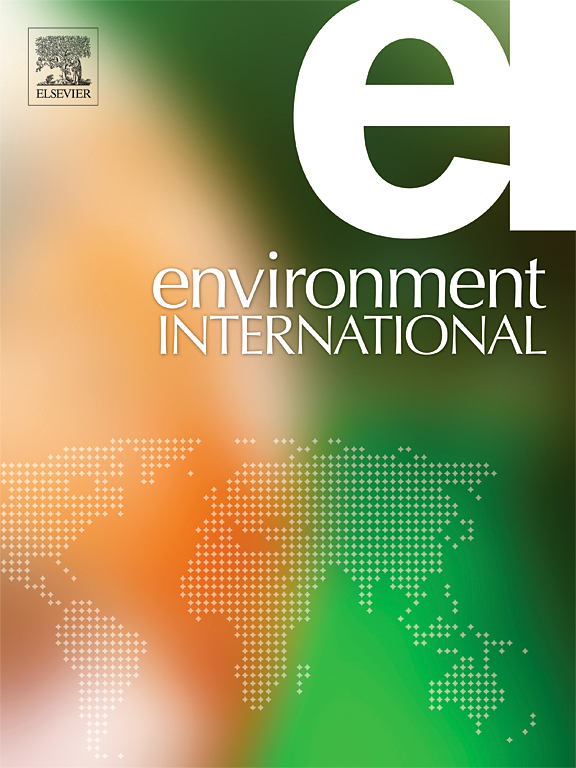Supervised machine learning for nutrient and contaminant profiling and benefit-risk assessment of Arctic seafood
IF 10.3
1区 环境科学与生态学
Q1 ENVIRONMENTAL SCIENCES
引用次数: 0
Abstract
Arctic seafood is a crucial source of nutrients due to its richness in proteins, omega-3 polyunsaturated fatty acids, vitamins and minerals. However, contaminants including Hg and persistent organic pollutants (POPs) in fish may pose a health concern for consumers. This study aimed to profile concentration patterns including interspecies and regional variations between Barents Sea and Norwegian Sea, and to explore correlations of nutrients and contaminants in five commercially important Arctic marine fish species using supervised machine learning applied to analytical data. These multivariate patterns were subsequently used as input in Monte Carlo simulations to assess the benefit and risk of fish consumption. Except for Atlantic mackerel, fish from the Barents Sea generally had lower concentrations of Hg and POPs than those from the Norwegian Sea, while nutrient concentrations were largely comparable across both regions. Fatty fish, especially Atlantic mackerel and herring had higher nutrient scores than lean fish. Consuming lean fish from 300 to 450 g per week did not entail risk of excessive Hg, dioxins and DL-PCBs exposure. Although weekly consumption of more than 190 g of mackerel or 130 g of herring from the Norwegian Sea, may exceed the tolerable weekly intake for dioxins and DL-PCBs (P > 0.05), both species are excellent sources of EPA + DHA, Se and vitamin D. The nutritional benefits may outweigh the potentially risk of dioxins and DL-PCBs exposure. Arctic fish rich in many essential nutrients are important for food security.

监督机器学习用于北极海产品的营养和污染物分析和利益风险评估
北极海产品富含蛋白质、omega-3多不饱和脂肪酸、维生素和矿物质,是重要的营养来源。然而,鱼类中的汞和持久性有机污染物等污染物可能对消费者的健康构成威胁。本研究旨在描述巴伦支海和挪威海之间的浓度模式,包括物种间和区域变化,并利用应用于分析数据的监督机器学习探索五种商业上重要的北极海洋鱼类中营养物质和污染物的相关性。这些多变量模式随后被用作蒙特卡罗模拟的输入,以评估食用鱼类的益处和风险。除了大西洋鲭鱼外,来自巴伦支海的鱼类的汞和持久性有机污染物浓度通常低于来自挪威海的鱼类,而两个地区的营养物质浓度基本相当。脂肪含量高的鱼类,尤其是大西洋鲭鱼和鲱鱼的营养成分得分高于瘦肉鱼类。每周食用300至450 克的瘦鱼不会带来过量接触汞、二恶英和多氯联苯的风险。尽管每周食用挪威海鲭鱼190 克或鲱鱼130 克可能超过二恶英和多氯联苯的可耐受摄入量(P >; 0.05),但这两种鱼类都是EPA + DHA、硒和维生素d的极好来源。营养益处可能超过二恶英和多氯联苯暴露的潜在风险。北极鱼类富含许多必需营养素,对粮食安全至关重要。
本文章由计算机程序翻译,如有差异,请以英文原文为准。
求助全文
约1分钟内获得全文
求助全文
来源期刊

Environment International
环境科学-环境科学
CiteScore
21.90
自引率
3.40%
发文量
734
审稿时长
2.8 months
期刊介绍:
Environmental Health publishes manuscripts focusing on critical aspects of environmental and occupational medicine, including studies in toxicology and epidemiology, to illuminate the human health implications of exposure to environmental hazards. The journal adopts an open-access model and practices open peer review.
It caters to scientists and practitioners across all environmental science domains, directly or indirectly impacting human health and well-being. With a commitment to enhancing the prevention of environmentally-related health risks, Environmental Health serves as a public health journal for the community and scientists engaged in matters of public health significance concerning the environment.
 求助内容:
求助内容: 应助结果提醒方式:
应助结果提醒方式:


